How to Buy a Great Daypack for Hiking
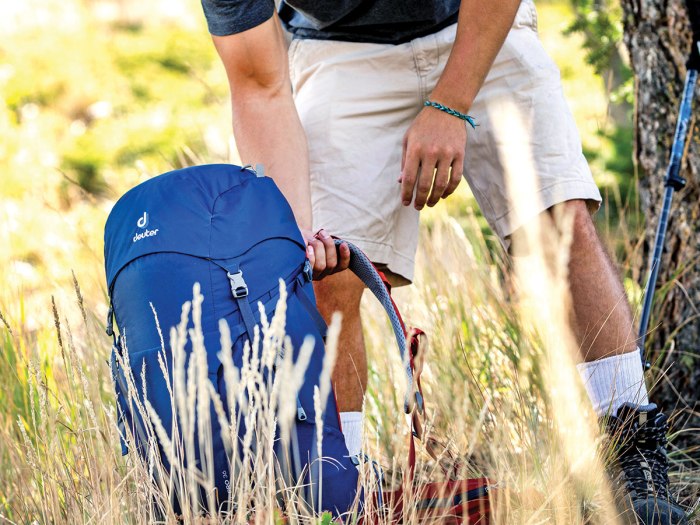
Dayhiking is simple: Stuff what you need into a small pack and head off for a day of adventure. What can seem complicated is picking the right daypack.
YOUR FIRST QUESTION: WHAT DO YOU NEED A DAYPACK FOR?
Determining when, where and how far you hike — and how much gear you’ll carry — is a first step toward narrowing choices. Do you want to go lightweight and minimalist or have abundant capacity and an assortment of pockets and features? Should your daypack be built for toughness or be lighter for trekking easygoing trails?
Then, of course, there’s price.
After answering those questions, look at these factors when choosing a daypack:
CAPACITY
A daypack that can hold between 16 and 22 liters has enough space for most dayhikes for which you’re carrying extra layers of clothes, food, water and a few incidentals (camera, first-aid kit, fishing pole). If you want to carry more, especially in wintry conditions, look at packs with 28-40 liters of space. For a quick hike in good weather, a 12-liter pack works.
SUSPENSION
Any pack’s comfort weight limit depends on its internal frame (if there is one) and suspension (the shoulder straps and waist belt). Packs less than about 1 1⁄2 pounds usually offer minimal support and are made to carry about 10-12 pounds. For carrying up to 15 or 20 pounds or more comfortably, packs have a metal wire frame and/or a plastic framesheet, padded shoulder straps and a waist belt.
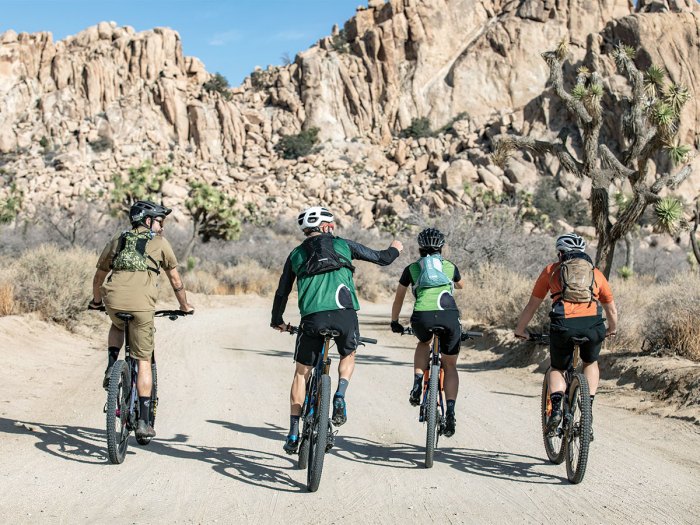
FIT
As with larger backpacks, the fit affects comfort, especially with more weight in the pack. Models made for youth have smaller, narrower suspensions. Teens can often wear adult models, in which small daypacks designed for 10 pounds or less often come in one size, while larger daypacks often come in two or three sizes and in men’s and women’s models.
ORGANIZATION
If you like an organized pack, look for quick access to the main compartment — like a clamshell-style top zipper or a side zipper — plus multiple external pockets. The tradeoff? Those features add cost, weight and bulk.
MATERIALS
While many hiking daypacks are made with similar materials, some are constructed with more durable materials — but, again, this might increase weight and cost.
THE BEST DAYPACKS
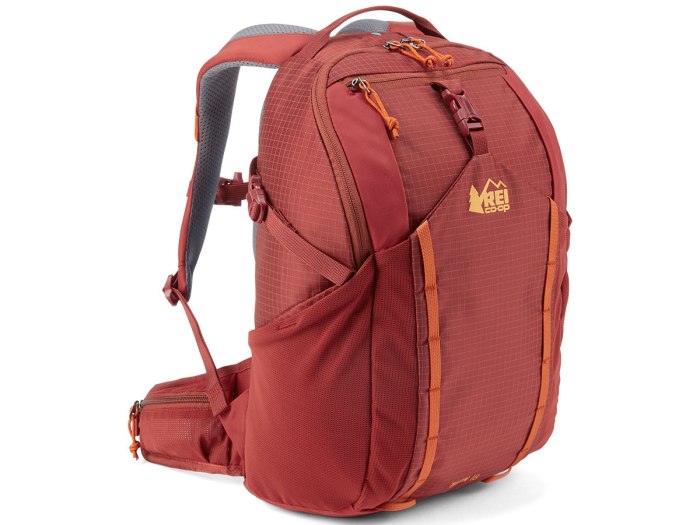
FOR YOUNGER SCOUTS: If you’re 8-12 years old, take a look at the REI CO-OP TARN 18 PACK ($45, rei.com). It has an ideal design for a young hiker: zippers to quickly access the main compartment, as well as a front pocket, a stretch front pocket, hipbelt pockets, padding in the shoulder straps and hipbelt, and a ventilating back pad. At 18 liters, the Tarn has the space and organization for water, snacks, a jacket and maybe a favorite action figure. 1 lb. 1 oz.
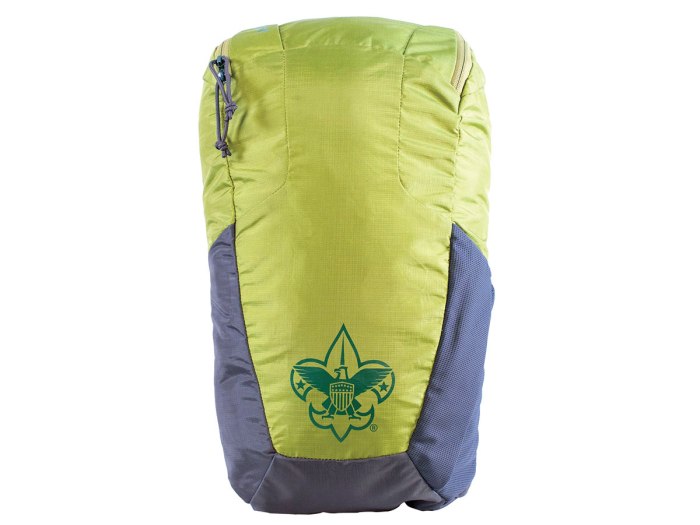
BARGAIN BUY: On a budget? The KELTY BSA 15L DAYPACK ($30, scoutshop.org) has a spacious 15 liters of capacity and two external pockets. The one unisex size fits torsos 18-21 inches for taller teens. Stuffing into its own top pocket, it’s packable and light enough to bring on backpacking trips for side hikes. But with no frame, belt or sternum strap, consider its comfort limit well under 10 pounds, best for short outings. 14.5 oz.
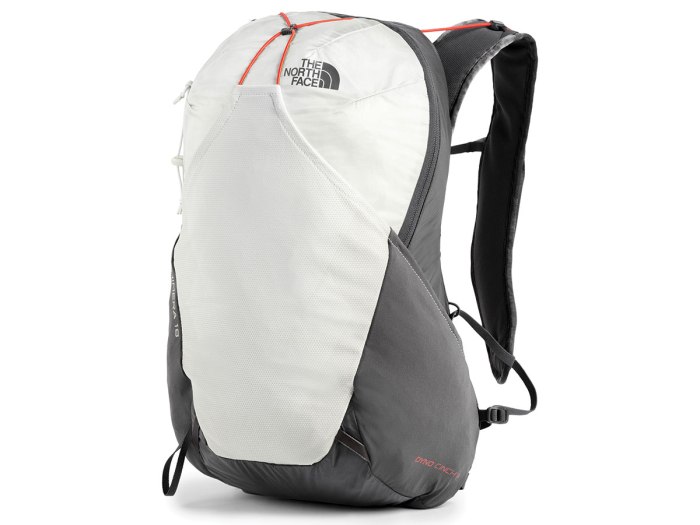
LIGHT ALL-PURPOSE PACK: For coming in at just 18 ounces, THE NORTH FACE CHIMERA 18 PACK ($100, thenorthface.com) punches above its weight, starting with comfort even on long hikes carrying up to 15 pounds, thanks to a harness that disperses the load across wide shoulder straps. Its very cool DynoCinch System compresses the load to improve stability using cords within reach when wearing the pack. The 18-liter capacity is enough for all-day three-season hikes, and includes quick access to two zippered compartments plus convenient mesh pockets on the shoulder straps. 1 lb. 2 oz.
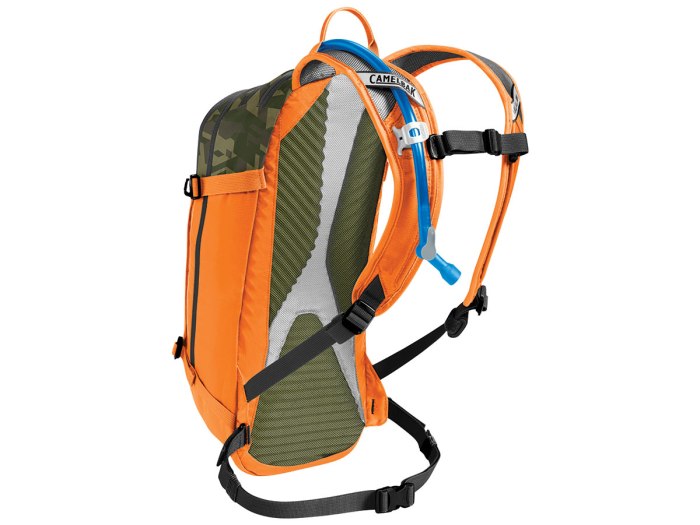
BIKING PACK: If you’re serious about mountain biking, the CAMELBAK M.U.L.E. HYDRATION PACK ($110, camelbak.com) offers top performance. The streamlined, torso-hugging unisex harness remains stable whether you’re cranking uphill or ripping downhill. The main compartment — accessed quickly with an external zipper — has 9 liters of space, and with five external pockets, it’s easy to store bike tools and other small items. The pack also features a stretch pocket and external hooks. Bonus: It comes with a 3-liter CamelBak bladder to help keep you hydrated. 1 lb. 5 oz.
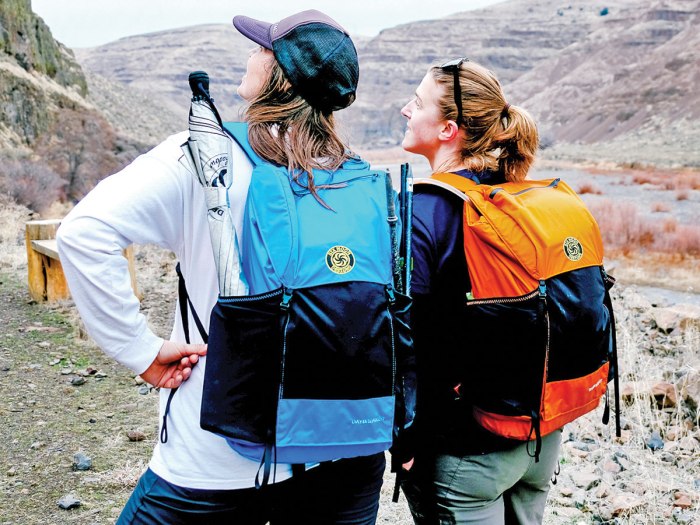
ULTRALIGHT AND VERSATILE: Fast-and-light adventurers should look closely at the SIX MOON DESIGNS DAYBREAKER DAYPACK ($120, sixmoondesigns.com). It has impressive capacity for its weight: 24 liters in the main compartment, an extension collar that adds 4 liters, plus stretch-woven pockets on the front and sides (2 liters total). The 210 D Nylon Robic delivers good durability, and a removable back pad doubles as a sit pad. For committed ultralighters, the hip belt and hydration sleeve can be removed to slash 3 oz. 1 lb. 4 oz.
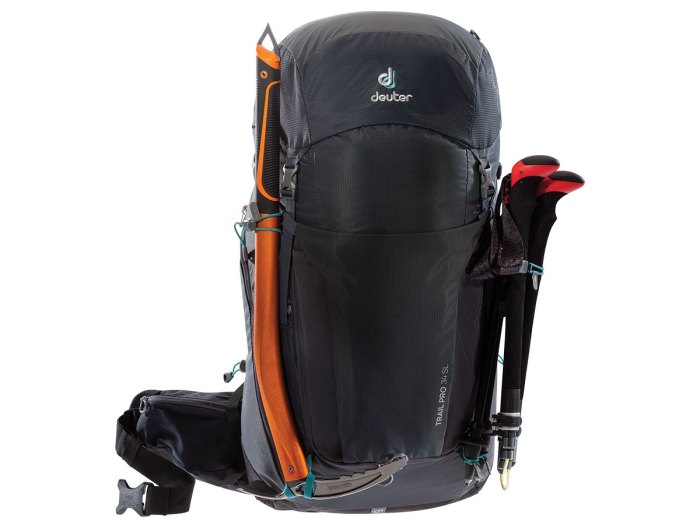
FOR BIGGER LOADS: For adventures that aren’t short, casual or light, the men’s DEUTER TRAIL PRO 36 and women’s TRAIL PRO 34 SL ($165, deuter.com) offer big volume and lots of features, plus way more capacity and versatility than many competitors. The spring-steel suspension and plastic framesheet let you haul 25-35 pounds. This traditional top-loader has a U-shaped zipper to access the main compartment and six pockets, ice ax and trekking pole attachments, and a rain cover. And just try to damage it — won’t happen. 3 lbs. 7 oz.
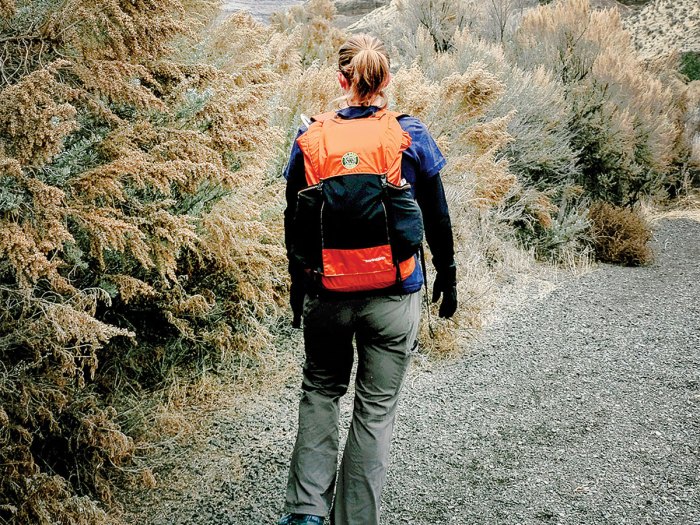
I climb mountains with snow on it with the ice axe.
The Scout Shop sells a 50 liter backpack for 100 dollars.
I use The North Face Recon Pack and It is one of the best investments I ever made. Great for school and fits hydration bladder, first aid kit, the works.